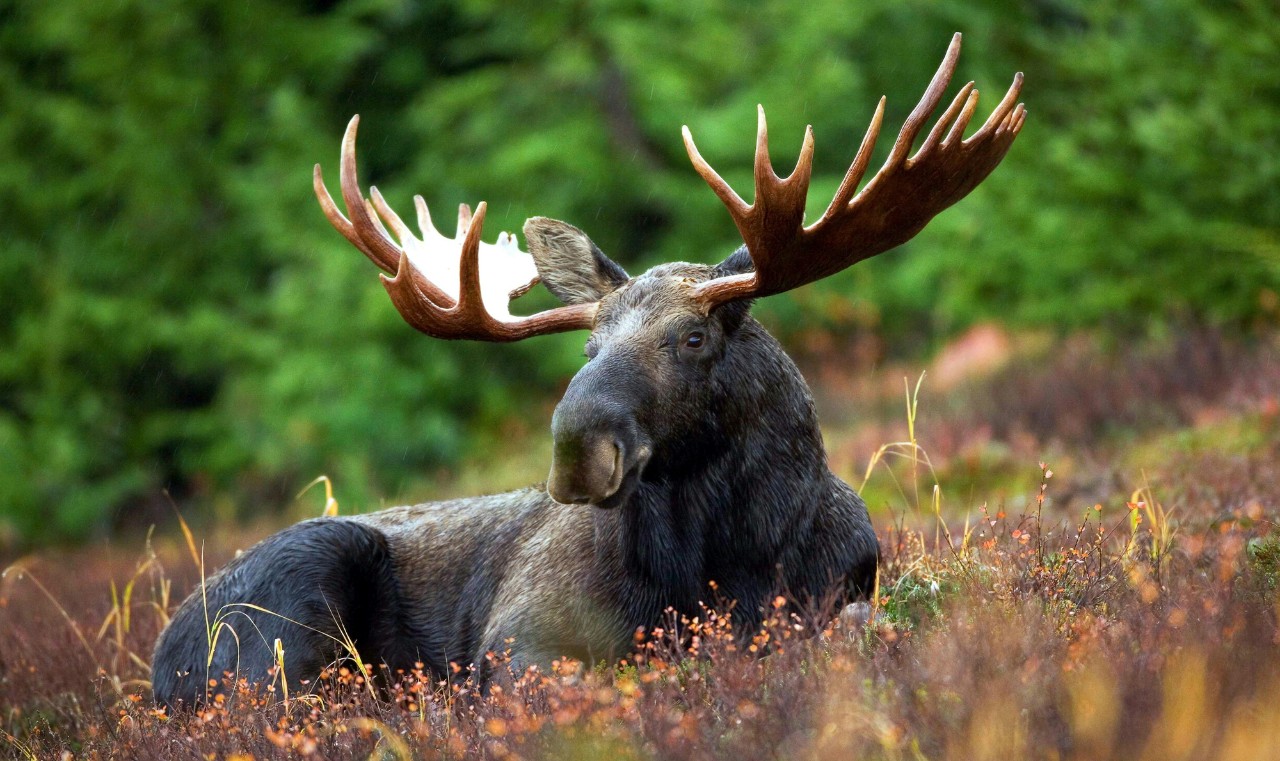
Invasive moose in Colorado? Not so fast, expert says
UC paleoecologist finds long history of moose in southern Rockies
A University of Cincinnati researcher found evidence that moose have inhabited Colorado's southern Rockies for at least the last 165 years.
UC College of Arts and Sciences Associate Professor Joshua Miller and his research partners penned an article in the Conversation that examined historical accounts of moose in Rocky Mountain National Park.

UC Associate Professor Joshua Miller holds a shed caribou antler from the Arctic National Wildlife Refuge. Miller uses strontium analysis to study the movements and diet of elusive, far-ranging or extinct animals. Photo/Colleen Kelley/UC Marketing + Brand
The National Park Service raised questions about whether North America's largest deer is native to the southern Rockies or is an invasive species. The distinction is important because it could make it easier for wildlife managers to justify culling or eradicating moose altogether to protect habitat for elk and other animals.
More than 3,000 moose live in and around the park.
According to wildlife managers, the growing population of moose in the park are degrading wetland habitat critical for other species. Moose can be aggressive and dangerous. And vehicle collisions with the enormous deer can lead to severe injuries or fatalities.
The agency cited a 2015 unpublished report to conclude that moose were transient visitors to the park with no historical established populations.
But Miller and his research partners refuted the agency's conclusions. They found historical evidence in travel diaries, newspaper stories and photo archives that moose have inhabited the southern Rockies for at least the last 165 years.
Milton Estes, son of Estes Park's namesake Joel Estes, wrote about shooting a moose in the park in 1863. Miller and his research partners also found documented examples of moose stories, hunts and songs by local Native Americans including the Ute, Shoshone and Arapaho.
Miller has used strontium analysis to track the movements of wide-ranging animals such as caribou and even extinct ones such as mastodons across landscapes.
He partnered with William Taylor from the University of Colorado Boulder and John Wendt from Oklahoma State University. All three have studied ancient animals of the Rockies.
Featured image at top: The National Park Service says moose are degrading wetland habitat in Rocky Mountain National Park. Photo/Shivam Kumar

UC Associate Professor Joshua Miller stands in front of a bronze mammoth statue outside the Cincinnati Museum Center's Geier Research Center. Photo/Andrew Higley/UC Marketing + Brand
Related Stories
‘Designer drug’ shows early neuroprotective signal in acute ischemic stroke
October 28, 2025
Medscape highlighted new trial results led by the University of Cincinnati's Eva Mistry that found an experimental drug shows promise in protecting injured brain cells for patients with acute ischemic stroke.
Is menstrual fluid ‘the most overlooked opportunity’ in women’s health?
October 27, 2025
The Guardian recently reported that period blood has long been thought of as ‘stinky and useless’, but startups are exploring using the fluid to test for a wide range of health conditions — including endometriosis.
What is squalane, and how does it work to moisturize skin?
October 27, 2025
The University of Cincinnati's Kelly Dobos was featured in a Women's Health article discussing squalane, an ingredient being increasingly used in moisturizing skincare products.
